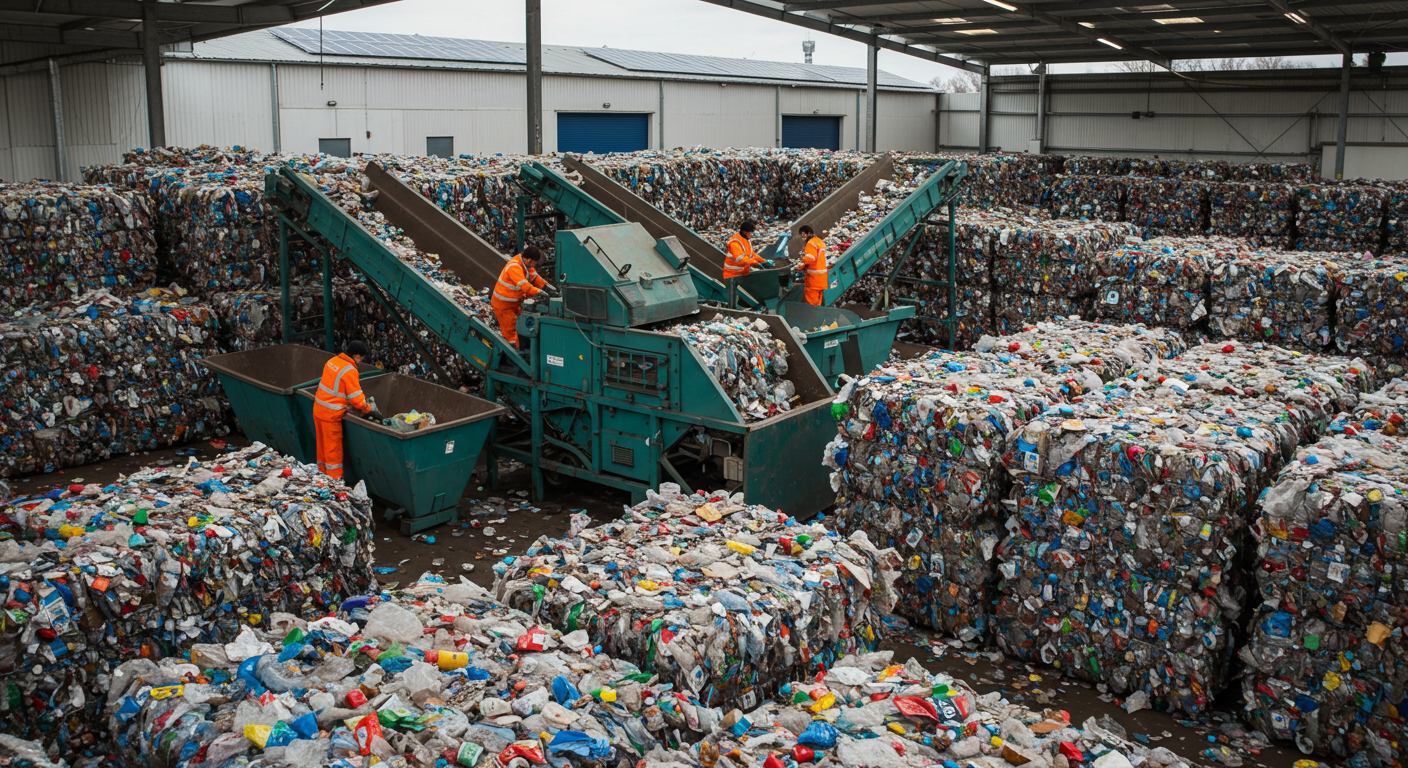For decades, Canadians have dutifully sorted their waste, placing their faith in the blue bin as a symbol of environmental responsibility. This simple act, however, masks a far more complex and troubling reality. Canada’s plastic problem is not a failure of individual responsibility but a systemic crisis rooted in a linear “take-make-waste” economic model. This is the full story of that crisis, from production to pollution.
Part 1: The Plastic Iceberg: Quantifying Canada’s Waste Crisis
The sheer volume of plastic in the Canadian economy is immense. Each year, Canadians throw away over 3 million tonnes of plastic waste, yet our national recycling rate for plastics has consistently hovered at a dismal 9%. This means for every ten plastic items a Canadian places in a blue bin, nine are likely destined for a landfill, an incinerator, or the natural environment. The value of the plastic material thrown away is a massive economic loss, projected to reach $11 billion annually by 2030 if current trends persist.
The data clearly identifies single-use packaging as the primary culprit, accounting for nearly half of all plastic waste generated in Canada.
Part 2: The Myth of Recycling
Our recycling system is struggling, undermined by deep-seated issues at every stage.
- Design for Disposal: A significant portion of plastic packaging, such as black plastic trays and flexible films, is not designed to be recycled with current infrastructure.
- A Patchwork of Policies: Canada lacks a national, standardized approach. A confusing patchwork of rules differs from province to province, and even city to city, leading to high rates of contamination.
- The Economics: Virgin plastic, produced from often-subsidized fossil fuels, is frequently cheaper and of higher quality than recycled plastic, creating a powerful market disincentive for manufacturers to use recycled content.
Part 3: The Single-Use Plastics Prohibition
In response, the Government of Canada implemented the Single-Use Plastics Prohibition Regulations. The law, which began phasing in at the end of 2022, bans the manufacture, import, and sale of six specific categories of items: checkout bags, cutlery, ring carriers, stir sticks, straws, and certain types of foodservice ware. However, by the government’s own admission, these six items account for only about 1% of Canada’s total plastic waste, making the ban more symbolic than substantive.
Part 4: The Environmental and Human Toll
The plastic that isn’t recycled accumulates in our environment, exacting a heavy toll on ecosystems and human health.
The Invisible Invasion: Microplastics
Plastic waste breaks down into tiny particles smaller than 5mm known as microplastics. They are now ubiquitous, found in the food we eat, the water we drink, and the air we breathe. The Great Lakes, which provide drinking water for 40 million people, are a stark case study. An estimated 10,000 tonnes of plastic pollution enter this vital freshwater system every year. A 2019 study from the University of Victoria estimated that the average person consumes between 70,000 and 121,000 microplastic particles per year, and the long-term health consequences of this internal accumulation are still unknown but a subject of urgent research.
Part 5: Charting a New Course – The Circular Economy
Averting the plastic crisis requires a fundamental paradigm shift away from the linear “take-make-waste” model and toward a **circular economy**—an economic model designed to eliminate waste and keep materials in use at their highest possible value for as long as possible.
Extended Producer Responsibility (EPR)
At the heart of this shift is Extended Producer Responsibility (EPR). EPR is a policy approach that makes producers financially and operationally responsible for collecting and managing their products and packaging at the end of their life. This shifts the cost burden away from taxpayers and creates a powerful financial incentive for companies to design products that are more durable, easier to reuse, and more efficiently recyclable.
Policy Levers for the Future
Beyond EPR, other key policies are essential for building a circular economy for plastics in Canada:
- Mandatory Recycled Content: The federal government has proposed regulations that would require plastic packaging to contain at least 50% recycled content by 2030 to create a stable market for recycled materials.
- Accurate Labelling Rules: New rules are planned to prohibit the use of the chasing-arrows recycling symbol on products unless they can be successfully recycled in at least 80% of Canadian facilities.
Conclusion: Beyond Individual Action
For too long, the narrative has focused on individual responsibility and the promise of the blue bin. This analysis demonstrates that recycling, as currently practiced, is a profoundly flawed strategy. The real levers for change lie in bold and comprehensive government policy that holds producers accountable and designs waste out of the system from the start. By embracing a circular economy, Canada can capture billions of dollars in lost material value, foster a new generation of green innovation, and establish itself as a global leader in the fight against plastic pollution.

